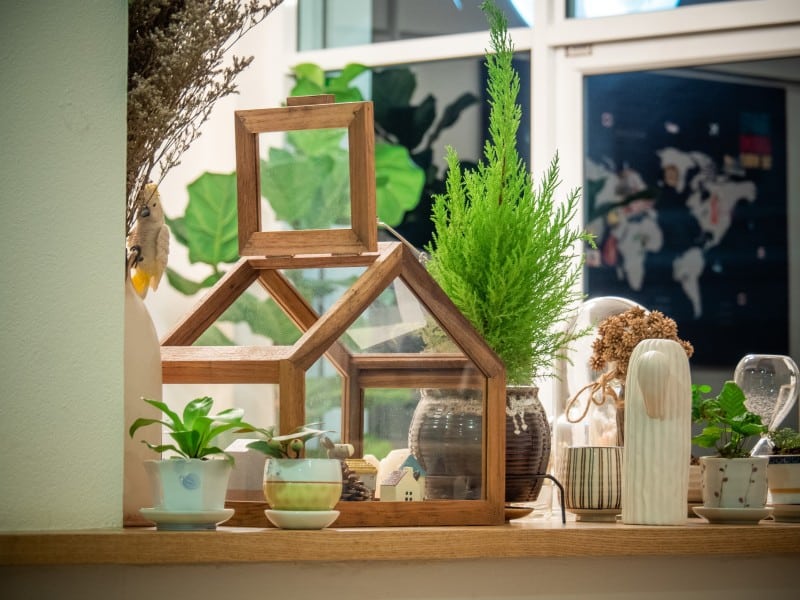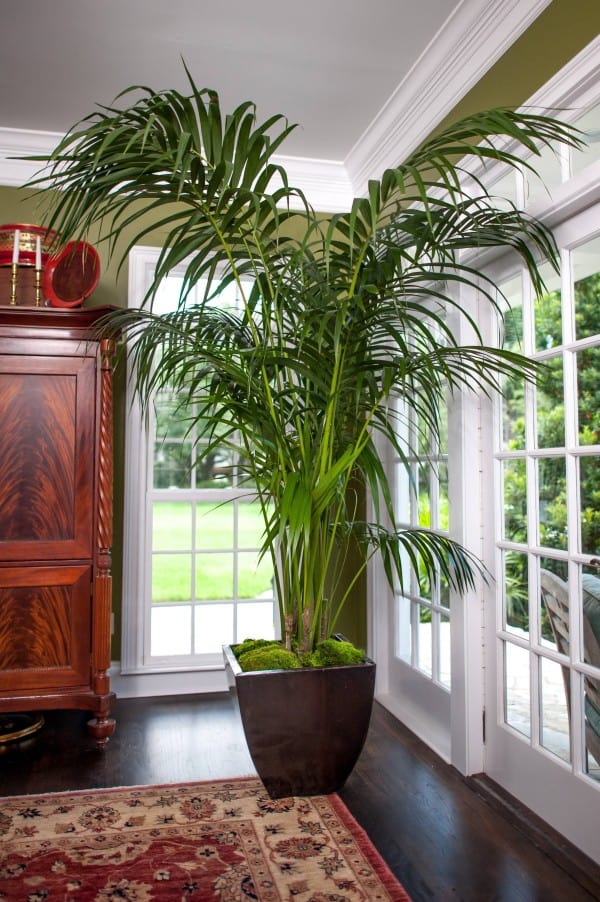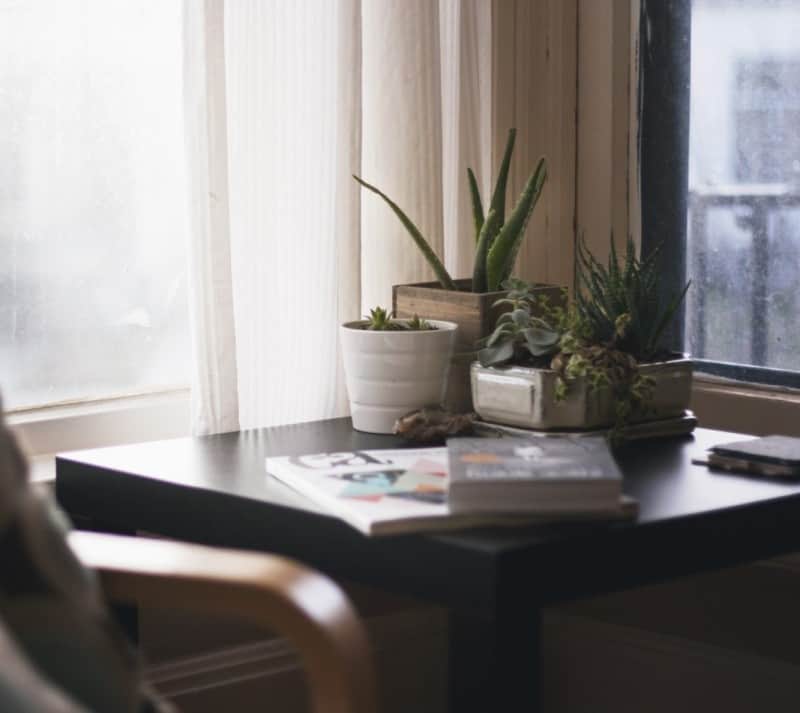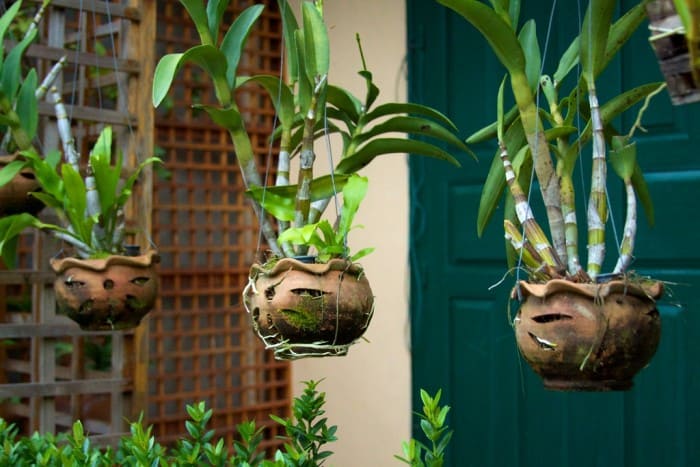Plants make great interior decorating themes. Learn how to make the most of them in this guide to decorating with plants.

Beautiful houseplants are a great way to add a little pop of life and color to any room. Even if you’re not a gardener, you can use houseplants to bring a breath of fresh air to your home.
Decorating with plants is easy and comes with a ton of flexibility. From towering philodendrons to tiny succulents, you can find the perfect houseplants for your decor and lifestyle.
Read on to learn more about some of the best types of houseplants and how to use them in interior design.
Big Houseplants
If you’ve got a lot of space to fill and want to make a dramatic statement, go with a big houseplant. Large plants make a space instantly feel fresh and a bit grand.
For instance, a gorgeous Kentia Palm would look very elegant in an ornamental planter in the corner of a living room. Some other majestic houseplants include the ficus, dracaena, dieffenbachia, and fiddle-leaf fig.

Small Houseplants
Small houseplants are a great option if you don’t have a lot of space to work with, or if you want to have a wide variety of plants on display. They give any room a cozy and lively vibe.
Small plants are especially suited to bedrooms and other more intimate spaces. Some of the best small houseplants include aloe vera, Chinese money plants, the asparagus fern, and small succulents.

Hanging Houseplants
Hanging planters from the ceiling is a great way to display plants without taking up surface area. Hanging plants feel very natural and create an eye-catching impact.

A similar alternative is a wall-mounted rack or shelf. This is a great way to save space and display your plants together, like a garden on your wall. You could even go with an indoor trellis for certain vines and other climbing plants.
There are many types of plants that look beautiful draped from a hanging basket or wall planter. Some examples include pothos, the fuzzy chenille plant, and classic English ivy.
Creative Containers
The planters you choose can make just as much of a statement as the plants themselves. Look for containers that complement the rest of the decor in the room.
While stylish traditional planters are wonderful, don’t be afraid to think outside the pot. For example, you can use jars, woven containers, reclaimed buckets, or eclectic pottery from the thrift store.
If you’re crafty, you can even make or decorate them yourself. For instance, a collection of tiny succulents would look adorable in mismatched, hand-painted pots. A similar color scheme would help to tie the look together.
Colorful Houseplants
If you’re looking to add colors other than green to your interior decor, there are many colorful and flowering houseplants to choose from. African violets are a low-maintenance option that comes in a wide variety of colors.
Orchids are another surprisingly low-maintenance plant. Their gorgeous blooms add a touch of elegance to your home.
If you’d prefer something with colorful foliage as opposed to flowers, you could consider the burgundy oxalis or a polka dot plant with colorful spotted leaves.
Houseplant Maintenance
In order for your houseplants to thrive, it’s essential to place them in areas of the house that will meet their needs. You should research how much sun and moisture your plants need to stay happy.
You wouldn’t want to put a sun-loving geranium in a dark bathroom. Instead, you might choose an orchid, which thrives in a dark, humid environment.
It’s also important to choose houseplants that fit your lifestyle. For instance, if you’re not a gardener, it’s best to look for plants that are hardy. Some good choices include the snake plant, Christmas cactus, ZZ plant, and of course, succulents.
These plants aren’t demanding at all to care for. As long as you water them every once in a while, you can otherwise basically ignore them.
Arrangement Tips for Decorating with Plants
When deciding how to arrange your houseplants, there are no absolute rules. There are many options to suit any sized room and style of decor. Here are a few ideas and tips to consider.
Corner Plant Stands
Placing houseplants in the corners of a room is a classic and space-efficient option. There are many plant stands designed specifically for placement in a corner.
Match Plants with the Right Planter
You want to make sure your planters complement the plants they hold. Consider the color and shape of plants, and find a container that matches well.
Size is another important factor when choosing the best pot for your plant. You want to make sure the pot isn’t too big, as too much exposed soil won’t look good. Too small of a pot will constrict roots and make it difficult for the plant to thrive.
Embrace Variety
When grouping multiple plants, variety is key. Use an odd number of plants and arrange them in a cluster rather than in a line. This will keep things looking organic rather than uniform.
Use the shapes and colors of your plants to create visual interest. Houseplants in contrasting colors will instantly brighten a room. Grouping plants with leaves of different shapes and sizes will make your arrangement seem full and lush.
You can create depth by arranging plants of different heights. Put shorter ones in front, or use a plant table. Placing plants on different levels creates a dynamic effect.
Bring Your Home Decor to Life
Decorating with plants is a simple and refreshing way to bring color and life to any room in your home. Whether you’re a veteran gardener or cursed with a black thumb, there are houseplants out there perfectly suited to your skills and style.
Want to learn more about how to get the interior design of your dreams? Check out more from our blog for great home decor ideas.
Related Posts
- Clever Tips to Make the Most of Your Hallway
- Trending Metal Home Decor Pieces for your Interior Design
- Tropical Interior Design – Ideas and Styles
- Best Lighting Trends For Your Home in 2020
- How to Protect Sliding Glass Doors from Burglars: Essential Security Tips
- How Long Do Sliding Glass Doors Last? Durability and Lifespan Explained
Leave a Reply